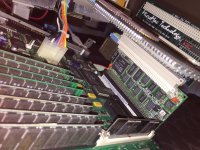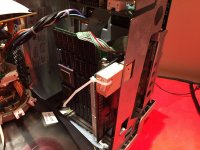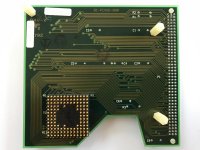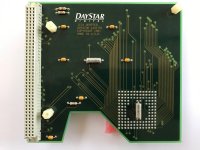I have the same concerns you do about your card, but we've got some
really talented folks (at least one who does board level repair work for a living and one who's been entrusted with doing much the same with priceless ROM DIMMs from the fabled PEx prototypes) who might step up to the plate for this. They do surface mount work on a regular basis, thru-hole DIP tech is a cake walk by comparison.
You're exactly right, I'm doing much the same thing the fellow at Artmix probably did with the SE/30 version of your card, but copying the fruits of his labor isn't something I personally consider ethical for me to do myself. So I've intentionally taken a "clean room" approach when it comes to that card, he is is still in business after all.
Take a look at the pic in this thread over at ThinkClassic:
DayStar PowerCache Adapter Family Tree. There are several interrelated threads out there aimed at cloning as many of the adapters pictured as possible. Re-creation of the DualPort IIsi pictured in that post (the later revision is featured in this thread) and then adapting it to an SE/30 form factor expansion card with a pair (at least.

) of conveniently located PDS passthru connectors is but a part of the overall cloning project.
The overall PowerCache Adapter cloning project itself is a part of the impossible dream of creating a Clone of this card . . .
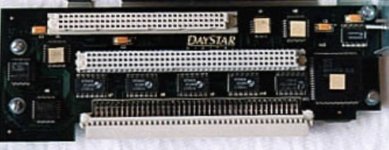
. . . which, after form factor adaptation, could introduce a NuBus slot into the possible mix of cards in your SE/30. I've had a series of threads running in parallel to this one related to the
NuBus in the SE/30 prospect that almost everyone with one seems to have been curious about from day one of the /30madness. If it works out, I'll have an adapter card putting a pair of NuBus Slots inside my own SE/30 along with my 50MHz 030 PowerCache accelerator.
Be that as it may, your help in winding up this chapter in the easiest possible manner would be greatly appreciated. However, if you remain uncomfortable with the prospect of desoldering and socketing the GAL on your card I understand and we can all work together in demystifying those disappeared traces by indirect means. [

] ]'>
edit: if someone else has an Artmix card in hand, desoldering/socketing the GAL on it in order to map those traces would be just as good. The GAL is one thing, that's real work, but simply copying the traces on the DiiMO card is another thing entirely. Despite complications related to my Jesuit education, I'm not
THAT much of a purist! [}

] ]'>

